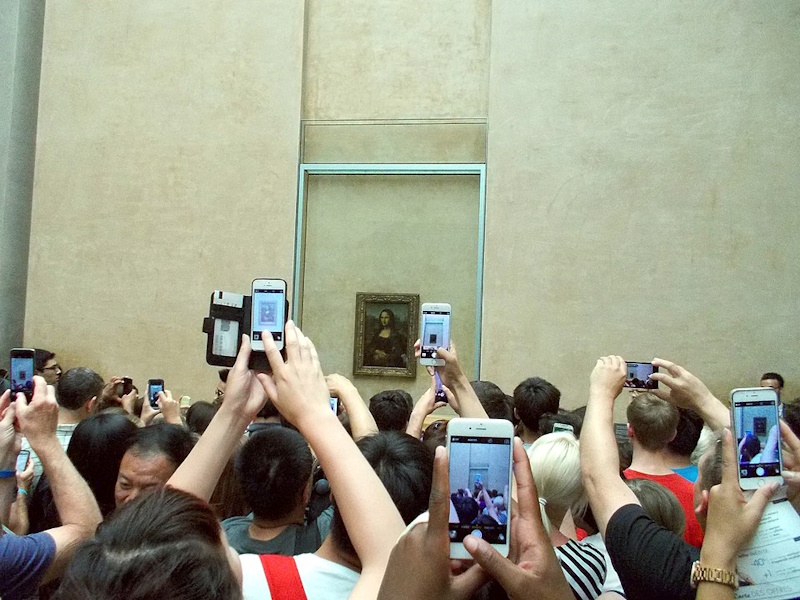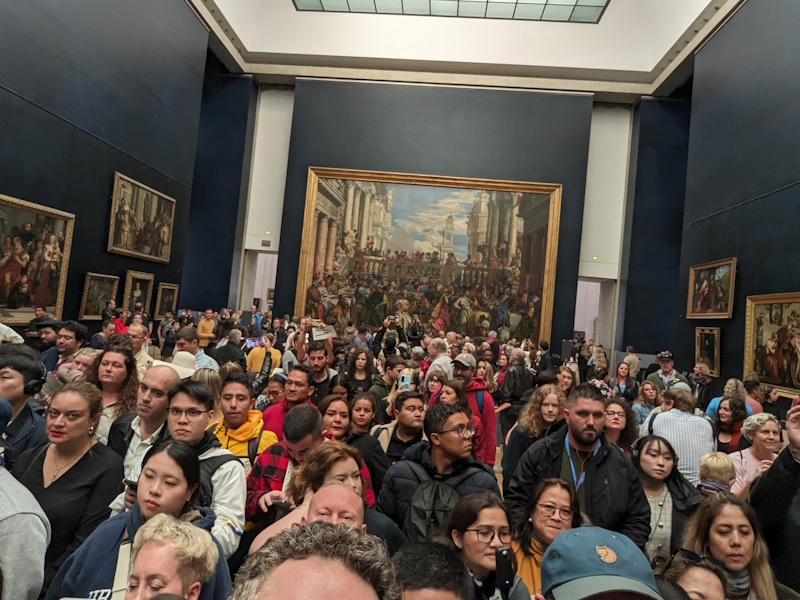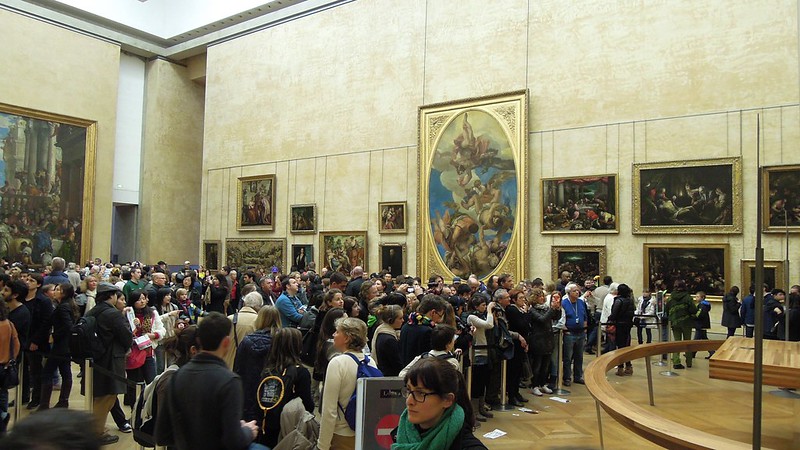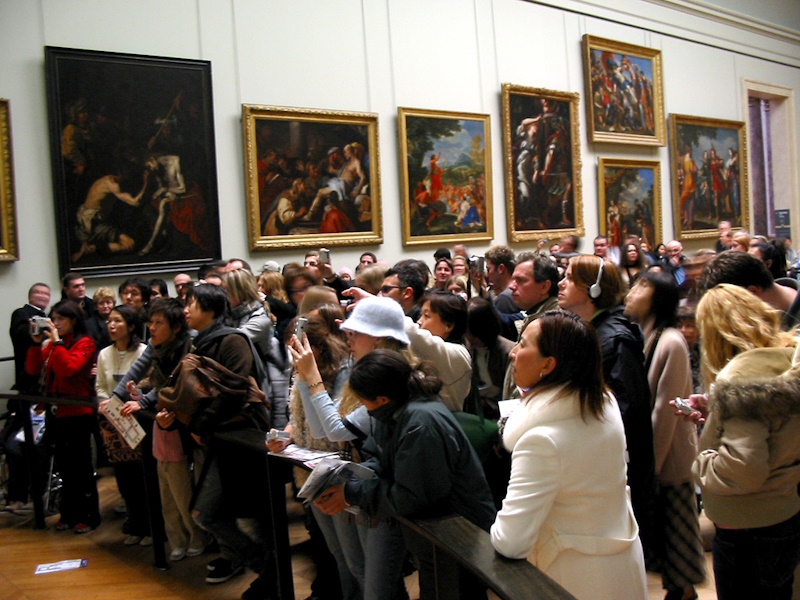Is the Mona Lisa Really Worth It? Travelers Speak Out
The Mona Lisa is the most famous painting in the world, and the biggest draw at the Louvre. The experience is sometimes called the Hollywood Boulevard of Europe -crowded, commercial, and more about the scene than the art.
It’s often said that 80% of visitors head straight to the Mona Lisa and then leave, ignoring the rest of the museum.
Travelers walk away with very different impressions. Some are disappointed, others moved, and many wonder why the experience feels so chaotic. Here’s what people who have been there say about whether the Mona Lisa is worth your time.
The First Impression: Distance and Glass

For many, the shock comes when they finally reach the front. The painting is behind thick protective glass and kept several meters away by a barrier. You cannot get close enough to see fine detail.
Visitors often say they could see it better on a screen than with their own eyes. That feeling of distance often leaves you questioning whether the effort was worthwhile.
For many, the shock comes when they finally reach the front. The painting is behind thick protective glass and kept several meters away by a barrier. You cannot get close enough to see fine detail.
Visitors often say they could see it better on a screen than with their own eyes. Others are struck by how small it feels – some compare it to a sheet of paper or a postage stamp.
That feeling of distance and the modest dimensions might leave you questioning whether the effort was worthwhile.
The Reality of the Crowd

Crowds are part of the Mona Lisa experience. Midday, the room is often described as a sea of people pushing forward, with phones raised high for selfies.
For some visitors, it takes 45 minutes to get to the front, only to spend seconds with the painting. The room is compared to a concert pit or even a rugby scrum, with people jostling and shoving. Staff sometimes move visitors along after only ten seconds at the rail.
The crowd itself has become part of the show. The scene itself becomes a spectacle: visitors photograph the crowd rather than the artwork, amused by the disappointed faces and the endless selfies.
The experience is often described as claustrophobic, even stressful, with influencers holding up the line for long video takes. Pickpocketing warnings add to the unease.
Timing Makes All the Difference
The crowd may be manageable if you plan well. Those who arrive at the Louvre for the first entry slot often walk straight up to the front within minutes.
Evening visits, especially on Fridays when the museum stays open late, can also feel calmer. Some notice that the room clears after 4 pm, with the mob reduced to half its size.
During special circumstances like the early days of Covid reopening or national holidays, people have even had the room nearly to themselves.
Private guides and early-access passes sometimes allow visitors to reach the painting before anyone else. Disabled visitors are often escorted directly to the front, within a few feet of the glass.
In rare cases, guards have cleared the entire crowd for special situations, allowing one person to stand alone in front of the painting.
The Polarized Opinions on the Painting
Some visitors admit to a letdown and find the painting overrated. They point out its size, the barrier, and the hype that no artwork could meet. Harsh critics call it the most disappointing piece of art in the world.
Connoisseurs focus on the innovations: Leonardo’s sfumato technique softening the contours of the face, his anatomical precision from years of dissection, the asymmetrical horizon line, and the aerial perspective that gives depth to the landscape.
Art lovers say these touches changed painting forever, like seeing color film for the first time after only knowing black-and-white.
Masterpieces Everyone Overlooks

The room that holds the Mona Lisa is filled with treasures. Directly opposite is Paolo Veronese’s Wedding at Cana, the largest painting in the Louvre, so vast that figures approach life size.
Other nearby highlights include Leonardo’s St. John the Baptist, a painting he kept with him late in life, and Giovanni Paolo Panini’s Ancient Rome, rich with architectural detail.
Jacques-Louis David’s monumental Coronation of Napoleon also stuns, along with his other works in the same wing.
Elsewhere in the Louvre, Winged Victory of Samothrace has brought visitors to tears, and masterpieces by Titian, Tintoretto, Ingres, and Vigée Le Brun hang with little attention compared to the Mona Lisa.
The Experience Beyond the Painting
For many, the value lies less in the artwork itself and more in what surrounds it. Some enjoy the drama of the crowd: the shuffle forward, the impatient faces, the phones held high. The scene has been described as performance art in its own right.
Some visitors even say the photograph of the crowd is a more interesting souvenir than the painting itself.
Others find the real reward in ignoring the scrum altogether. Turning away from the Mona Lisa to study the massive canvases, or slipping into a quieter gallery, can be the most satisfying choice.
Future Changes at the Louvre
The Louvre has announced plans to create a dedicated room for the Mona Lisa with its own entrance. The goal is to reduce the congestion in the current gallery and give visitors a clearer view.
Other suggested solutions include installing a moving walkway similar to the Crown Jewels display in London, or displaying a high-quality replica in a prominent spot to absorb selfie-takers.
For now, though, the experience remains what travelers describe: crowded, distant, and unforgettable for reasons beyond the painting itself.
Practical Tips and Odd Details
- Pre-purchase tickets and head straight to the Mona Lisa if it’s a priority.
- Avoid peak midday hours; early morning, late afternoon, or evening openings are calmer.
- The Louvre has no public water fountains, so bring your own bottle or be prepared to buy water. Bathrooms can also mean long waits.
- Consider skipping the Mona Lisa entirely and focusing on other wings of the museum, or visiting smaller museums like the Orsay or Orangerie for a calmer experience.
- The Amis du Louvre membership allows early entry, re-entry, and more flexibility.
Worth It or Not?
Whether the Mona Lisa is worth it depends on what you expect. If you want an intimate encounter with a Renaissance masterpiece, the setup will likely disappoint.
If you want to witness one of the most famous cultural spectacles on Earth – the world’s obsession distilled into a single room – the experience may be fascinating.
Some walk away with a sense of awe, others with a shrug, and many with photos of the crowd rather than the painting.
What is clear is that the painting continues to draw millions every year, each with their own story of what it was like to meet the most famous smile in art.

